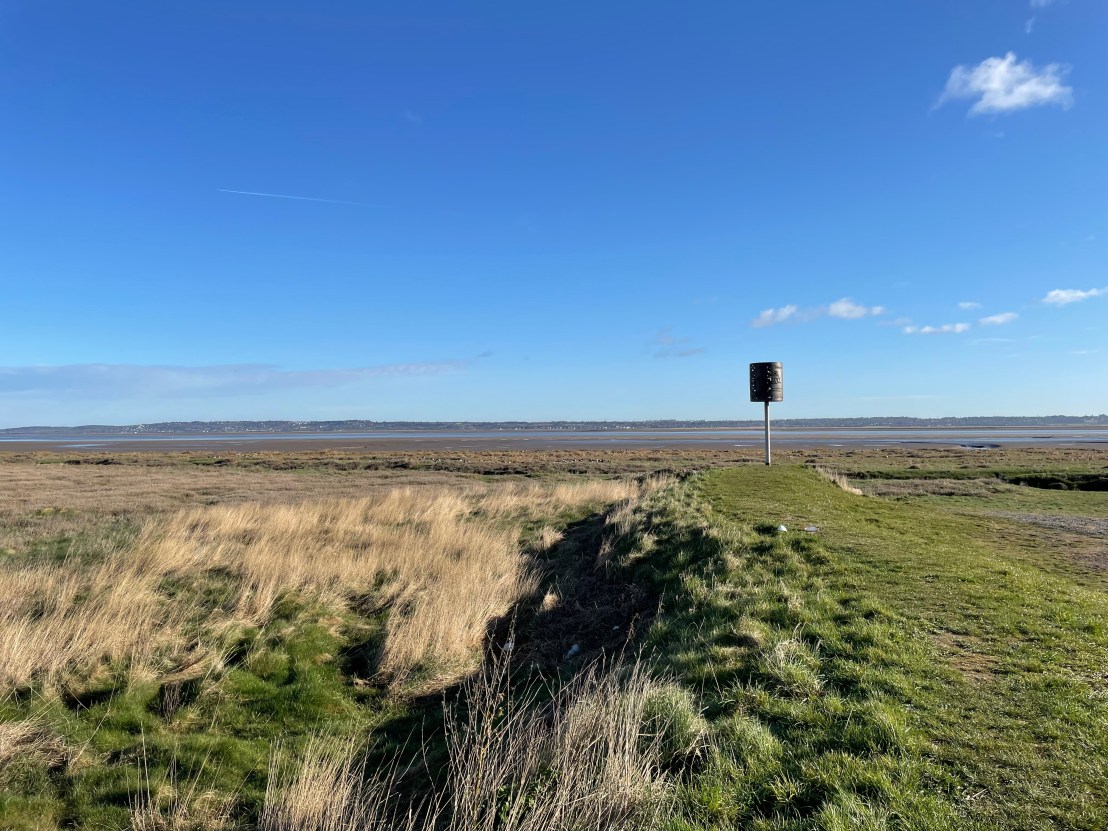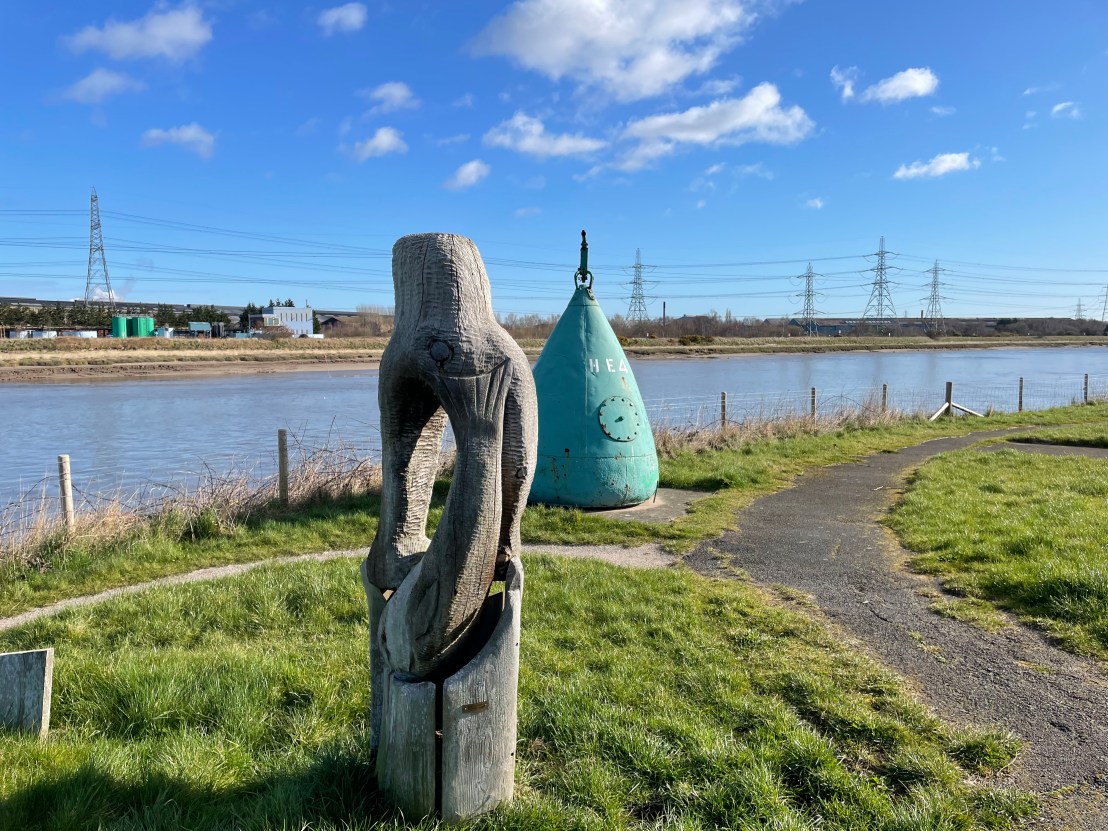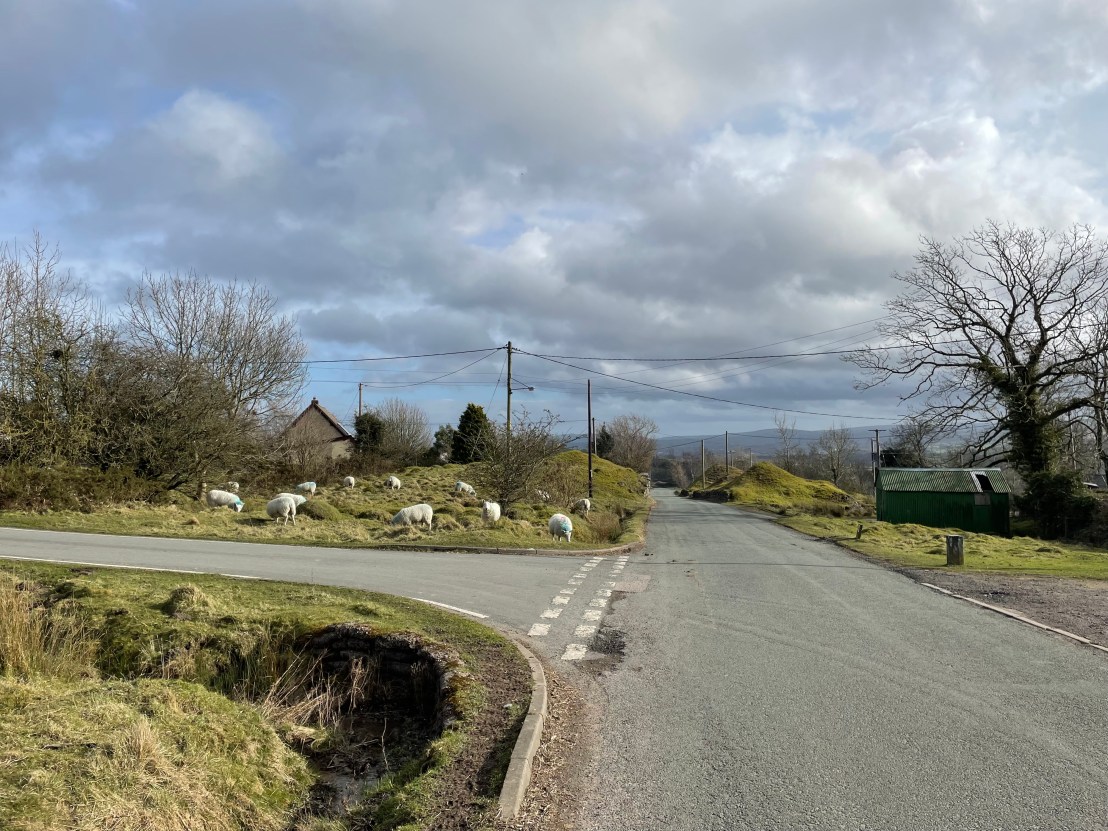Flintshire - Deeside delights to escape the world's troubles
As I made the early morning journey up the M6 towards Flint I was acutely aware of how lucky I was to be making this trip at all. The 5 live news on the radio brought tears to the fore with a mix of horror and joy. The horror, Ukraine’s helpless civilians trapped below the rubble of a Mariupol theatre with Putin’s armed forces laying siege to the town, seemingly intent on razing it to the ground, destroying everything and everyone in it. The joy being the powerful description of a family reunited, Nazanin Zaghari-Ratcliffe’s emotional homecoming, finally, secure in the arms of her husband and daughter following six long years in an Iranian prison, an innocent victim of political hostage taking.
The rocketing price of diesel, with a forecourt price of £1.89 per litre a direct result of the Russian invasion of Ukraine produced an eye watering tank fill of £125 to start the day but at least the parking was free on arrival at Flint Castle!

If the radio news en-route to Flint was a tough listen then the starting point for my tour of Flintshire was the perfect antidote. Directly on the coast, sandwiched between castle ruins and the RNLI lifeboat station, cobalt skies and a bracing breeze provided instant energisation and an uplifting boost to the senses.




Initial build beginning in 1277, Flint castle was part of King Edward 1’s “Iron Ring” of fortresses in North Wales. Immortalised in Shakespeare’s play, Richard II, the castle was the setting for when Richard is captured.



Having taken in the sights of the coast and castle I headed out of the car park over the railway and met the school run on the busy Chester Road, annoyingly before even leaving the traffic behind I was struck by the uneasy feeling I had left my wallet on full show in the van, frustratingly my return revealed I hadn’t left it on show and cursing my own forgetfulness I was finally on my way properly at 9am.

The first few nondescript km’s of the ride navigating the busy roads out of Flint and through Connah’s Quay were thankfully replaced by the cycle path along raised banks next to the gently flowing River Dee. Arrow straight, pancake flat with excellent smooth tarmac this was easy riding, so peaceful, so relaxing.






The dry forecast, cool but with sunny spells was ideal for the first outing of the Stolen Goat Solihull CC Orkaan short sleeve jersey complete with matching arm warmers -these needed switching shortly after this selfie as I realised “Solihull” was displayed upside down in the riding position!

Saltney Ferry Bridge provides a handy crossing point for cyclists and walkers wishing to cross the river before entering Chester. Climbing gently away from the Dee my planned route around Hawarden Castle was thwarted by insurmountable security gates, it appears these days that access through the estate is reserved for those getting married in the pavillion.

With a short detour on the Chester Road to skirt round the prohibited Hawarden Castle grounds bringing me back on to the planned route, the Garmin climb pro feature flashed up climb number 1 of 10, gentle climbing soon became a steady 6-8% grind for a couple of kilometers up to the little village of Hope. The name wasn’t lost on me and once again thoughts of the suffering in Ukraine returned to temporarily dampen my mood. The continuing early spring sunshine, weak in temperature but powerfully bright rewarded the elevation gained with fabulous views of the valleys and rolling hills.

The 2nd climb of the day, Hope Mountain, was the sternest leg test of the day. Ranking 5/10 in Simon Warren’s additional climbs of Wales pocketbook it is tougher than the ranking suggests, a consistently tough slope for nearly 2km it averages at 10% with maximum ramps of 14%, the lack of any respite makes it worthy of respect. Even taking it steady with most of the days riding still ahead of me my heart rate was hovering around 160 bpm for most of the climb. The descent although not terribly technical needed caution due to it being a steep, narrow, debris strewn carriageway.

The impressive gates encountered at the bottom of the descent are of local legend in these parts. In planning this route I picked up a little book “The A-Z of Curious Flintshire” written by David Rowe. Amongst many other quirky and humorous tales about the folk of Flintshire through the ages the book tells the story of how local legend has it that the gates have never been opened as they have never been paid for. The gates are indeed far grander than Leeswood Hall, the house they serve. Sir George Wynne the owner found himself incarcerated in the Kings Bench Debtors Prison in London due to the expense of elections and building programs he was involved in running-up debts he couldn’t service. Originally there was an equally impressive set of black gates to match the remaining white gates but these have since been re-sited.



A very short excursion of about 50m into Denbighshire brought me to Loggerheads Country Park and more importantly to Caffi Florence for a bite to eat and a much needed top up of water bottles.
The compact little cafe was doing brisk trade mainly with rambling retirees, but the only seat left, a sofa hidden in the corner, was a comfortable spot to eat a good quality tuna melt sandwich.



A wrong turn from me on the way out of Loggerheads brought the wrath of the Park Ranger upon me for riding on the footpath and over a pedestrian only bridge thankfully his ire quickly subsided once I had explained I was looking for the road out and not planning on shredding the Loggerhead Trails and scattering O.A.P ramblers in my wake!





The highest point of the ride, the road up towards Moel Famau, the highest hill in the Clwydian range and the highest point in the county was a bit of a slog with regular ramps of 10-12% for 6km or more, disappointingly I seemed to miss the best viewpoints and photo opportunities.





A further block of off-road trails and a couple of barely passable bridleways continued to delay my progress towards the coast.

The St David monastery at Pantaspaph was planned as my second coffee stop of the day but unfortunately St Pio’s cafe appears to be permanently closed as a result of the pandemic.

Baby Nik was in Wales on his first spring ride – it would have been rude not to do a portrait amongst the daffodils!

The coast beckoned in the distance and a fast flowing descent to the beach at Talacre was exhilarating in the cool sunny conditions.




The sand dunes and beach at Talacre provide a tranquil spot in early March but I doubt this is the case in peak holiday time as the 7 miles of sandy beach are home to the huge Presthaven Holiday Park which if I’m honest was an enormous blot on the landscape as I descended down to Talacre. In fairness although it wouldn’t be my choice for a holiday the ride through the park showed it to be spotlessly clean and outwardly very well maintained with plenty of facilities for families to enjoy right next to the sandy beaches and impressive dunes.

The adventurer in me decided to include the “low tide path” in my route planning, what I didn’t plan for was the 500m of sand dunes to traverse to get to the path, unsurprisingly the cyclocross fan in me saw this as an opportunity to mimic cross heroes like Wout Van Aert and Matthieu Van Der Poel, I envisaged blasting my way through the sand. The reality was a painful slog at snails pace to the brow of a dune followed by a spectacular, but very soft crash as my front wheel decided to go in completely the opposite direction to my body at the bottom of the dunes slope. A quick survey of the beach revealed I had performed my acrobatics audience free so following a brush down I was on my way without so much as a blush of the cheeks to worry about.

The wooden sculpture at Point of Ayr remembers the pit ponies at the Flintshire colliery.
Near Prestatyn, Point of Ayr was the last remaining deep pit in north Wales when it closed in 1996.
Coal was mined from beneath the seabed there for more than 100 years.
The colliery was one of the last to be mechanised and pit ponies were used until 1968,

As I left the sculptures behind me the light was fading quickly and I had a decision to make, I knew there were two more categorised climbs to be tackled and with most of the day’s descents requiring a degree of caution due to poor road surfaces and debris I decided I would only climb the hills if it was still clear daylight. This decision resulted in the final climb of the day being omitted, instead selecting the traffic free path along the coastline to the castle finish point in Flint. With its’ deep gravel sections and numerous gates hindering progress a dark finish was now confirmed.




Greenfield Docks had links to the slave trade by virtue of the cotton that was brought back to Liverpool being supplied on to the Greenfield Cotton Mills via these docks.

My decision to miss out the last climb of the day due to the darkness left me with a dilemma, with just 159km on the Garmin when I returned to the van could I really call the day complete? Of course not, a night time tour of Flint, the castle and the views over to the illuminated Dragon bridge and industrial steelworks across the Dee were a fitting end to an excellent days riding, filled with engaging sights, never a dull moment though tough at times due to the terrain traversed.


The ride in numbers
162.65km Distance
2212m Elevation gain
8hrs 48 min moving time (18.5 km/h)
2 SIS Tropical Fruit gels
3 Torq Rhubarb and Custard gels
1 Tuna Melt Sandwich
1 Flapjack
1 coffee stop
5 bottles of water
0 beer – Flintshire Brewery a research task still to be undertaken!
0 punctures – a hint of a puncture but tubeless to the rescue again
9 categorised climbs
12.2km of “unknown” surface type
Finally if you’ve got a spare quid in your pocket my justgiving page to raise vital funds for the Midlands Air Ambulance is now live Keith Jones is fundraising for Midlands Air Ambulance Charity (justgiving.com)
Comments
Post a Comment